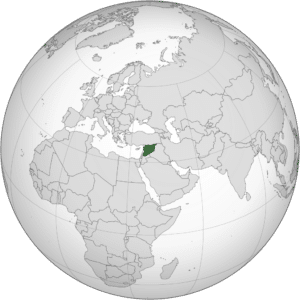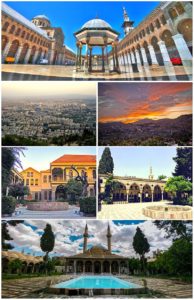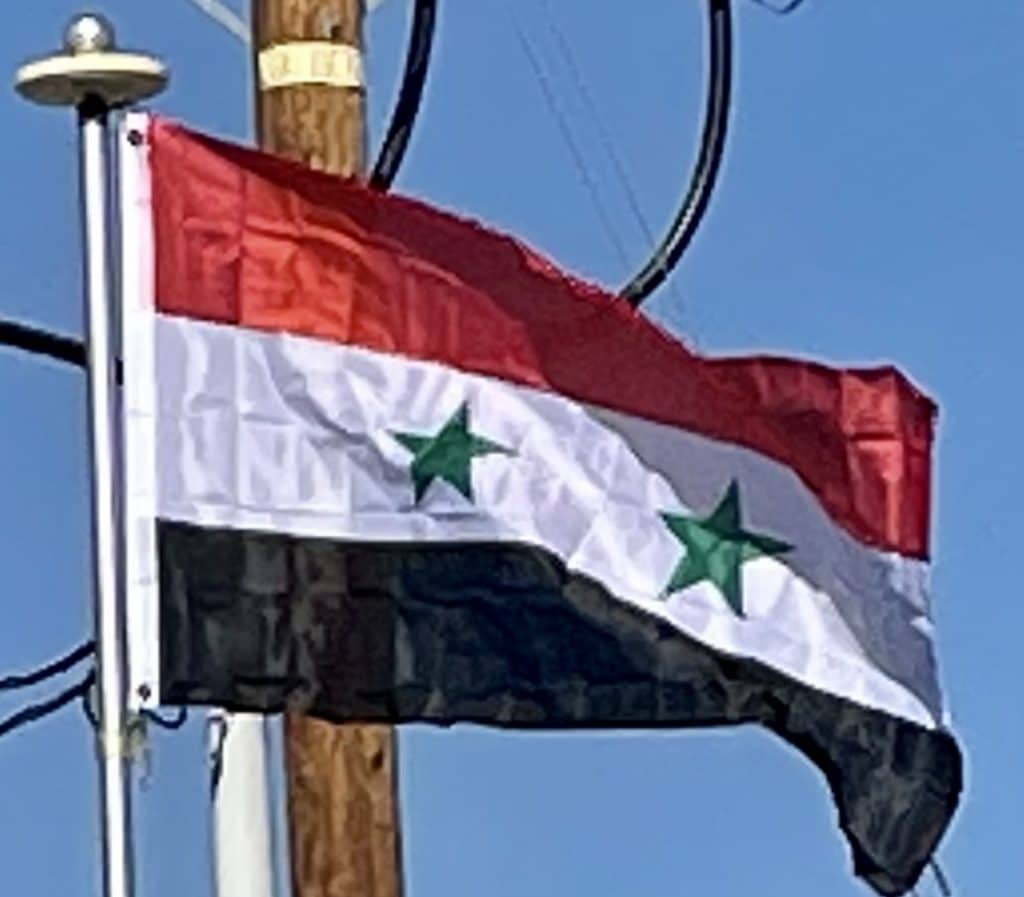Introduction:
Syria, officially the Syrian Arab Republic, is a country in Western Asia, bordering Lebanon to the southwest, the Mediterranean Sea to the west, Turkey to the north, Iraq to the east, Jordan to the south, and Israel to the southwest. Its capital and largest city is Damascus. A country of fertile plains, high mountains, and deserts, Syria is home to diverse ethnic and religious groups, including the majority Syrian Arabs, Kurds, Turkmens, Assyrians, Armenians, Circassians, Mandaeans, and Greeks. Religious groups include Sunnis, Christians, Alawites, Druze, Isma’ilis, Mandaeans, Shiites, Salafis, and Yazidis. Arabs are the largest ethnic group, and Sunnis are the largest religious group.

Syria is a unitary republic consisting of 14 governorates and is the only country that politically espouses Ba’athism. It is a member of one international organization other than the United Nations, the Non-Aligned Movement; it was suspended from the Arab League in November 2011 and the Organisation of Islamic Cooperation, and self-suspended from the Union for the Mediterranean.
The name “Syria” historically referred to a wider region, broadly synonymous with the Levant, and known in Arabic as al-Sham. The modern state encompasses the sites of several ancient kingdoms and empires, including the Eblan civilization of the 3rd millennium BC. Aleppo and the capital city Damascus are among the oldest continuously inhabited cities in the world. In the Islamic era, Damascus was the seat of the Umayyad Caliphate and a provincial capital of the Mamluk Sultanate in Egypt.
The modern Syrian state was established in the mid-20th century after centuries of Ottoman rule, and after a brief period of French mandate. The newly created state represented the largest Arab state to emerge from the formerly Ottoman-ruled Syrian provinces. It gained de jure independence as a parliamentary republic on 24 October 1945, when the Republic of Syria became a founding member of the United Nations, an act which legally ended the former French Mandate, although French troops did not leave the country until April 1946.

The post-independence period was tumultuous, with many military coups and coup attempts shaking the country from 1949 to 1971. In 1958, Syria entered a brief union with Egypt called the United Arab Republic, which was terminated by the 1961 Syrian coup d’état. The republic was renamed as the Arab Republic of Syria in late 1961 after the December 1 constitutional referendum of that year, and was increasingly unstable until the 1963 Ba’athist coup d’état, since which the Ba’ath Party has maintained its power. Syria was under Emergency Law from 1963 to 2011, effectively suspending most constitutional protections for citizens.
Bashar al-Assad has been president since 2000 and was preceded by his father Hafez al-Assad, who was in office from 1971 to 2000. Throughout his rule, Syria and the ruling Ba’ath Party have been condemned and criticized for various human rights abuses, including frequent executions of citizens and political prisoners, and massive censorship. Since March 2011, Syria has been embroiled in a multi-sided civil war, with a number of countries in the region and beyond involved militarily or otherwise. As a result, a number of self-proclaimed political entities have emerged on Syrian territory, including the Syrian opposition, Rojava, Tahrir al-Sham and Islamic State of Iraq and the Levant. Syria was ranked last on the Global Peace Index from 2016 to 2018, making it the most violent country in the world due to the war. The conflict has killed more than 570,000 people, caused 7.6 million internally displaced people (July 2015 UNHCR estimate) and over 5 million refugees (July 2017 registered by UNHCR), making population assessment difficult in recent years.
History:
Ancient Antiquity:
The earliest recorded indigenous civilization in the region was the Kingdom of Ebla near present-day Idlib, northern Syria. Ebla appears to have been founded around 3500 BC, and gradually built its fortune through trade with the Mesopotamian states of Sumer, Assyria, and Akkad, as well as with the Hurrian and Hattian peoples to the northwest, in Asia Minor. Gifts from Pharaohs, found during excavations, confirm Ebla’s contact with Egypt.
